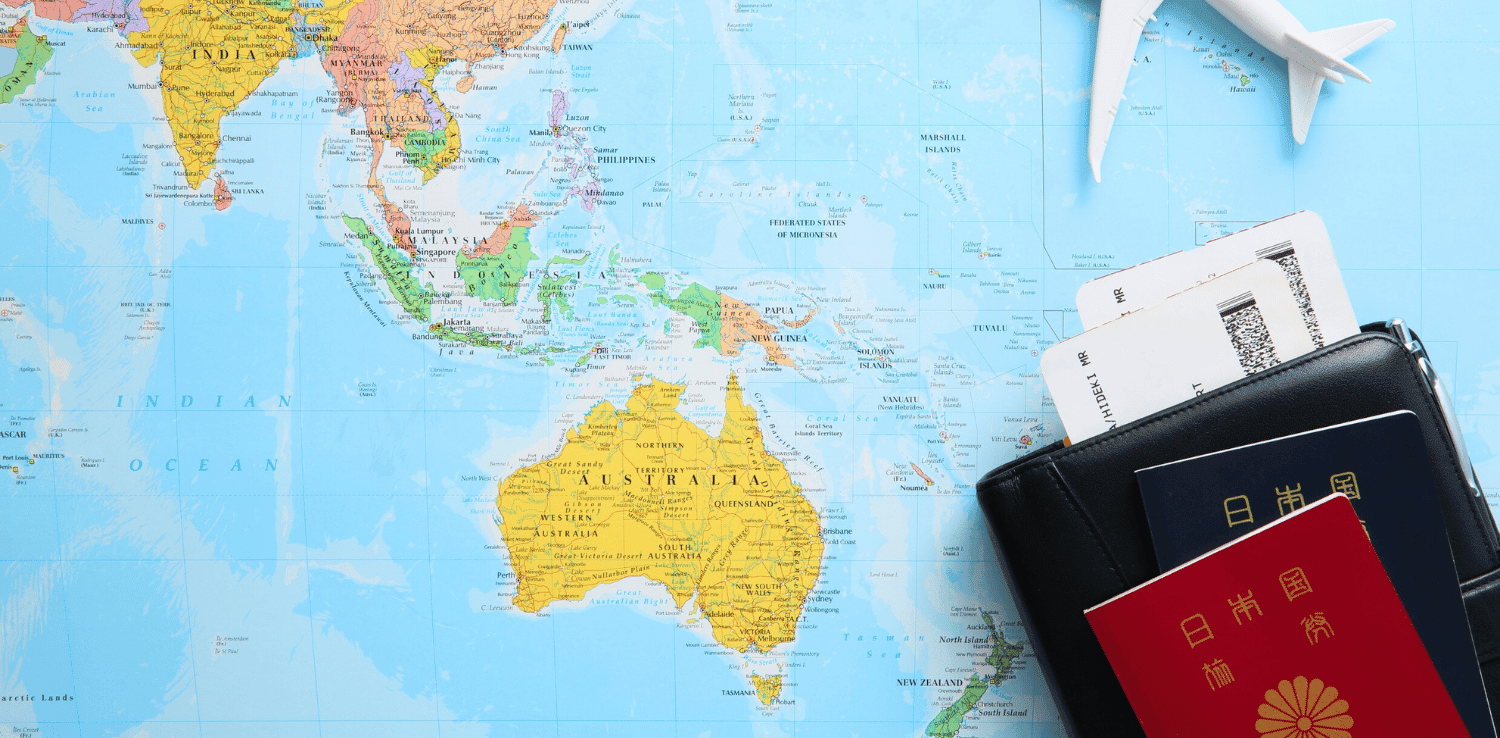Travel shakes up your routine in all the best ways. It brings you into new environments, introduces you to new people, and encourages a level of openness that’s harder to access at home.
But stepping into unfamiliar spaces also means being further from your usual support systems, including your trusted clinic, care team, and go-to pharmacy. When it comes to HIV prevention, that distance can lead to gaps if you haven’t planned ahead.
If you’re sexually active or living with HIV, it’s worth taking a few practical steps before you go. Preparing in advance gives you the freedom to enjoy your time away with more confidence and less uncertainty.
In this post, we’ll cover how to get tested before your trip, what to pack to protect yourself and others, and what steps to take if you experience a potential exposure while abroad.
1. Get Tested
Before you head out of town, take a moment to check in on your sexual health. If there’s any chance, you’ll be sexually active while traveling, you must get tested for HIV ahead of time.
About 13% of people living with HIV in the U.S. don’t know they have it. Early detection leads to better health outcomes and helps prevent onward HIV transmission.
Getting tested before you leave can help you:
- Confirm your HIV status before potential exposures
- Catch any recent infections that had not previously shown symptoms
- Explore prevention options like PrEP, if appropriate for your needs
If you’re in Marion County, Side by Side offers free, fast, and confidential HIV testing. You’ll get your results quickly (and support planning the next steps, if needed) so you can travel with clarity and confidence.
2. On PrEP? Fill ‘er Up Before You Go
If you’re already taking PrEP, make sure it’s packed before you leave. Taken consistently, PrEP (pre-exposure prophylaxis) can significantly reduce the risk of getting HIV from sex.
Check your prescription and bring enough medication to last the entire time you’re away, plus a few extra days in case of delays. You should also ask your healthcare provider for a travel letter, especially if you’ll be going through customs or international airports where medication questions may arise.
If you’re traveling across time zones, set a daily reminder or alarm to stay on track with your dosing schedule.
PrEP is recommended for anyone at higher risk for HIV, including people with multiple partners, inconsistent condom use, or recent STI exposure. We can connect you to free or low-cost PrEP options for your travel plans.
3. Pack Your Prevention Tools
You don’t need a lot to stay safe, but you do need to be prepared. Be sure to bring the following along:
-
Condoms (Internal and External)
Always pack your own condoms, internal or external. In many places, condoms may be challenging to find, expensive, or lower in quality. Pack a small, TSA-approved bottle of water- or silicone-based lubricant as well. Lube reduces friction, which helps prevent tears and lowers the risk of HIV and other sexually transmitted infections.
-
Clean Needles
If you take injectable medications (like hormones or insulin), pack sealed, sterile needles and a doctor’s note for customs if needed.
-
Consider a Self-Test Kit
For longer trips or destinations with limited healthcare access, an HIV self-test kit can provide reassurance and help you monitor your status on your terms. And that actually leads us to this next tip:
4. Understand Your Destination’s HIV Landscape

HIV is not confined to any single part of the world. Approximately 39.9 million people were living with HIV worldwide in 2023 with certain regions experiencing higher prevalence rates than others. The important thing to consider, however, is the differing levels of HIV care and prevention from country to country—and sometimes city to city.
Websites like the CDC Traveler’s Health page and the Global PrEP Tracker can help you locate clinics, testing sites, and reliable information about your destination.
Things to Research About the Country/City You’re Visiting:
- The local HIV prevalence and common transmission routes
- Availability of sexual health clinics or emergency HIV services
- Emergency support services or LGBTQ+ safe spaces
- Whether HIV-related medications are legal and accessible in that country, including PEP (see our next tip below)
5. Prep Yourself for PEP (Post-Exposure Prophylaxis)
If you experience a possible exposure to HIV while traveling (like a condom breaking, an unplanned sexual encounter, or needle-sharing) PEP (post-exposure prophylaxis) can reduce your risk of infection.
PEP is a 28-day course of antiretroviral medication that must be started within 72 hours of potential HIV exposure. The sooner it’s started, the more effective it is.
Take time to locate clinics near your destination that offer PEP and learn how to ask for it in the local language if needed. If you’re going to a remote area or somewhere with limited access to care, speak with your provider about possibly bringing a PEP starter pack just in case.
If you think you’ve been exposed to HIV and can’t access PEP while abroad, return home and visit an emergency clinic as soon as possible.
6. Pay Attention to Your Mental Health
Being away from your usual support systems can heighten feelings of stress, anxiety, or isolation. You should plan to care for your mental well-being just as intentionally as your physical health.
Stay connected to your support network through secure messaging apps or scheduled check-ins. Knowing you have someone to talk to can make a big difference.
If you take medication for anxiety, depression, or other mental health conditions, be sure to bring enough for your entire trip, along with prescriptions and any tools to cope, such as journals, playlists, calming exercises, or routines that keep you centered.
Also, don’t hesitate to reach out to local LGBTQ+ organizations or sexual health clinics. Many offer peer support, mental health resources, and affirming care.
You are not alone in your worries. But you don’t have to carry them alone. HIV is preventable, and support is available, wherever you are.
Traveling While Living With HIV: What to Know Before You Go
Your HIV status isn’t a death sentence. And it’s not a prison sentence, either. Living with HIV shouldn’t hold you back from traveling. You’re free to see the world—and you should! With a little planning, you can travel safely and stay on top of your health, no matter where you go.
Check for HIV Travel Restrictions
While many countries have eliminated discriminatory policies, some still enforce travel restrictions for people living with HIV. These laws may limit entry, require medical disclosure, or impose restrictions on long-term stays, work visas, or residency applications.
For instance, HIV-positive individuals may be refused entry or deported if discovered in:
- United Arab Emirates (UAE) (no entry, will deport)
- Yemen (no entry, will deport)
- Solomon Islands (no entry, will deport)
- Jordan (no entry, will deport)
- Egypt (>90 days, will deport)
- Lebanon (>90 days, will deport)
- Malaysia (>90 days, will deport)
- Mauritius (>90 days)
- Seychelles (>90 days)
- Singapore (>90 days)
To avoid any issues at the border, research your destination’s policies well in advance. Reliable resources like HIVTravel.org provide up-to-date information on international laws and visa requirements. Your healthcare provider may also be able to help you navigate country-specific HIV travel restrictions and rules.
Carry Documentation
Bring a copy of your prescriptions and a letter from your healthcare provider. This can smooth over any questions from airport security or customs agents, particularly if you’re carrying pills or syringes.
Bring Enough Medication
Make sure you pack enough antiretroviral therapy (ART) for your entire trip. Always keep your HIV medicine in your carry-on to avoid issues with lost luggage. But if you find yourself without medication . . .
Know Where to Find Care
If you’re traveling for an extended period, research HIV-friendly clinics or hospitals in advance. Knowing where to get a refill or medical assistance can be reassuring if something unexpected happens.
Keep Your Routine Rhythm
Sticking to your medication schedule is key, but crossing time zones can make that feel complicated. You might have heard the tip to add or subtract an hour for each time zone you cross. It’s a start, but let’s be real: that’s a lot of math (depending on your itinerary) and plenty of room for error.
So let’s simplify it:
-
The “Home Time” Alarm
This is the most foolproof method, especially for complex trips.
- Use a clock app or calendar app locked to your home time zone.
- Set your daily medication alarm to that “home time.”
- When the alarm goes off, you take your medication, whether it’s 3 PM in Paris or 6 AM in Honolulu.
That’s it. No math, no confusion, and a perfect interval between doses. You’re essentially creating a little bubble of your own time zone that you carry with you.
-
The “New Time” Alarm
This works great if you’re staying in one new place for a while and want to adapt to the local schedule.
- Before you leave, figure out what your usual dosing time will be in the new city. Use the time zone change method, adding or subtracting one hour per time zone crossed.
- Set your alarm for that new local time.
- You’ll only have to think about adjusting once—on the day you travel.
-
Timers > Alarms
Instead of a daily alarm set for a specific time, use a countdown timer. The core principle of managing medication across time zones is to maintain the proper interval between your doses. A timer guarantees this. If your medication is once-a-day, set a timer for 24 hours right after you take your dose. Twice-a-day? Set a 12-hour timer. This method is completely independent of time zones.
But I Didn’t Go On Vacation to Wake Up at 5 AM Every Day!
That’s fair. You’ve booked the trip. You’ve done the math and set your alarms or timers. Now you’re expected to wake up really early to keep your dosing rhythm. For some, it’s not only bothersome, it’s unsustainable. You might ask, “Is it okay to take HIV meds early or later?” or even “Is it okay to skip a dose?”
These are questions you definitely need to ask your physician. It’s generally okay to take meds one hour earlier or later. For anything beyond that, talk to your doctor.
The Last Word On These HIV Travel Tips!
Let’s face it: travel safety has always been a bit of a chore. Adding HIV prevention and care coordination to the list certainly adds some extra layers, but it’s not insurmountable. For those at high risk or living with HIV, it simply means adding a little extra seasoning to your plan. A dash of prep (and extra PrEP), a sprinkle of precaution—that’s the recipe for a safe and savory adventure.
To help with that, here’s a condensed list of resources mentioned in this article that can help you plan your travels:
HIV prevention while traveling is about staying informed and taking simple, proactive steps to protect yourself. We hope this post has helped you think through what to plan, what to pack, and how to take care of your health wherever your trip takes you.
Ready to take to the skies?
Side by Side is here for you. From free HIV testing and PrEP access to harm reduction resources and local support, we can walk you through what to do before, during, and after your trip.
Schedule your free HIV test today..





